Tour GuidesGuides
Private ToursTours
Private Car ToursCars
Virtual ToursVirtual
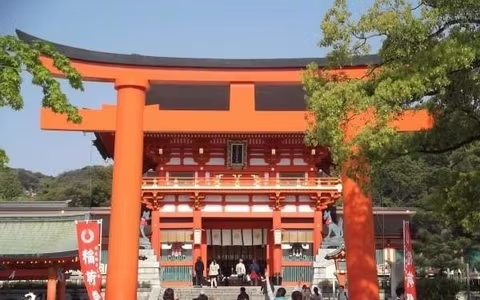
Tour of Fushimi-Inari-Taisya Shrine
Kyoto
3 hours
(History of the shrine) Fushimi-Inari-Taisha Shrine was founded when the god Inari was enshrined on Mt. Inariyama in February, 711. It celebrated the 1300th anniversary of the god`s enshrinement and all the buildings in the ground were restored and re-painted with the vermilion color in 2011. (Highlights) Fushimi-Inari-Taisya Shrine is the "So-honzan" head shrine of 30,000 Inari shrines across the country. There are paths called "sen-bon-torii", meaning alleys of tunnels made of 1,000 torii gates. Actually, however, it is said there are a total of more than 10, 000 torii gates, large and small, in the shrine compound which includes the whole of Mt. Inariyama. You can reach the 233-meter-high top of the mountain, or rather a hill, going up the paths, but it will be a laborious, 1.5-hour walk amid the rich greenery. In the meantime, it is the guardian shrine of merchants and tradesmen, attracting millions of visitors in the New-Year period. A pair of foxes sitting at the base of the gates are regarded as the messenger of the god. (How to enjoy) Go through the huge torii gate and walk along the paved main road and you will be met by the huge main shrine building. Then, walk on unpaved narrow paths which are inside the tunnel of torii gates according to the instructions of the signboard. There are many vermilion-colored buildings on your way, souvenir shops and smaller structures selling charms. You can sit on the sides of the paths and enjoy chatting with your companions or have lunch. There are some places which commnd a fine view of the city of Kyoto. (Others) The JR fare is 140 yen one way from JR Kyoto station. No entrance fee is required (although you are expected to offer whatever amount of monetary donations at the mainn building). Also you are supposed to follow the tradition, including clapping your hands twice when you worship.
FROM$107/ per group
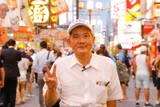
Tatsuhiro N.
4.56 / 5
(62 reviews)

Edo period atmosphere and modern art fuse together
Tokyo
6 hours
Monzennakacho and Kiyosumi-Shirakawa are attractive for their historic townscapes that retain traces of the Edo period. Dotted with cafes and galleries in renovated old machiya houses, the area offers a unique blend of tradition and modernity. Don't miss the historic temples and shrines such as Tomioka Hachiman Shrine and Fukagawa Fudo Hall. Kiyosumi Garden is also popular for its beautiful seasonal scenery. Recommended for those who wish to avoid the crowds and have a relaxing time.
FROM$281/ per group
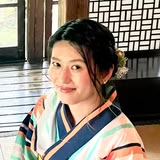
Yoshie Y.
5.00 / 5
(19 reviews)

Winter holiday's in Jerusalem lights and food
Jerusalem
3 hours 30 min
Hanukkah and Christmas overlap this year, so I will be doing an evening tour to see the Christmas lights and the lighting of the Hanukkah menorah in Jerusalem, and to try some local treats. This only applies for December 25th.
FROM$150/ per group

Melissa P.
4.00 / 5
(1 reviews)
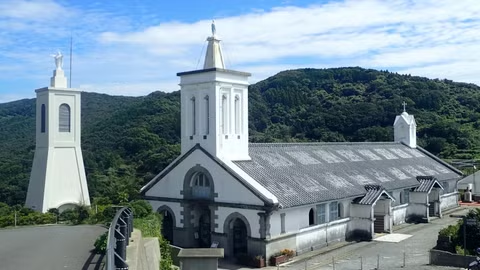
Hidden Christian Pilgrimage ⑥: Sotome (from Nagasaki)
Nagasaki
7 hours
Visit the major pilgrimage spots of NISHI-SONOGI area including 2 of 12 World heritage sites(Hidden Christian)of Nagasaki region. Tour time will be flexible from 6 to 9 hours depends on the numbers of highlight spots which you visit. You can choose highlight spots to visit. Some spots need admission fee.
FROM$281/ per group

Yukihiro (Hero)行博
4.95 / 5
(43 reviews)
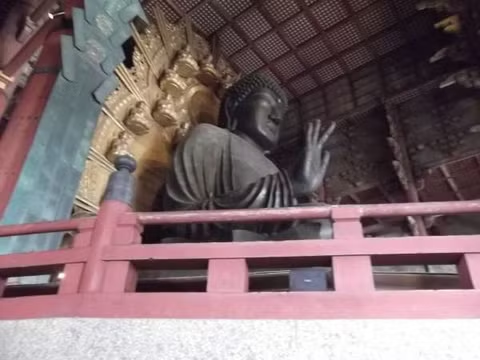
Tour of the Great Buddha of Nara
Nara
4 hours
(Highlights) The Great Buddha of Nara is a magnificent structure weighing some 500 tons. Originally built in 752 AD, the stature is 15.9 meters high excluding the pedestal and its face 4.8 meters long. Subsequently, it was damaged by natural disasasters, fires and wars and was repaired several times. It was completely rebuilt in the Edo period (1603-1867). You will be amazed at the splendid image of the Great Buddha calmly seated on the pedestal with the look of a perfect repose and passionless calm. His right hand shows mercy and left hand, the wisdom of the universe. The building housing this huge image, The Great Buddha Hall of Todaiji Temple, is the largest existing wooden structure in the world, having an area of 54 meters by 49 meters and a height of 45 meters. It was burned down by a fire twice, but was rebuilt in the Edo period. (How to enjoy) You will be amazed at how huge the Buddha image is. Immerse yourself in the solemn atmosphere it creates amid the odor of burning incense, wonder at the ancient technology and the wisdom and the devotion of people. After all, you will never end up not being deeply impressed with the aura the "Daibutsu-sama" Great Buddha emits. Everywhere around the Great Buddha Hall, in the meantime, you can enjoy mixing with tame deer which do you no harm but ask you for food, "shika-sembei", which is being sold at the nearby stalls for 150 yen a pack containing some 50 grams of the deer food. You will feel very happy feeding, stroking and hugging the cute animal whose number exceeds, perhaps, 100. (Others) The transportation fare between Kyoto and Nara on a Kintetsu train is 620 yen (plus 510 yen if you take a limited express train). The entrance fee to Todaiji temple is 600 yen.
FROM$107/ per group

Tatsuhiro N.
4.56 / 5
(62 reviews)
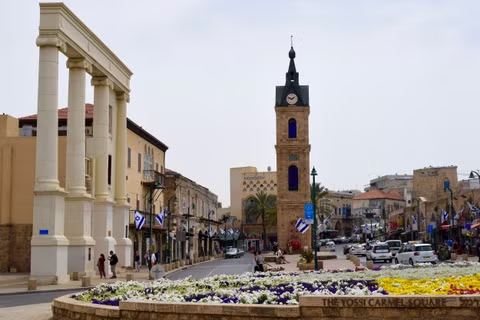
Historical walking tour of Jaffa
Tel Aviv
3 hours
A stroll through the history of Jaffa. We will see sites from a variety of time periods starting as far back as the Ancient Egyptian period through modern times. We will take breaks for photos and shopping.
FROM$120/ per group

Melissa P.
4.00 / 5
(1 reviews)

Wabi & Sabi -temples with gardens in Kyoto Higashiyama and more
Kyoto
7 hours
This tour focuses on the Zen temples with Wabi-Sabi gardens in Higashiyama such as Tenju-an, Nanzen-ji and Ginkaku-ji the Silver Pavilion. We will walk on Higashiyama where we can sense the Higashiyama Culture which is a fusion of the samurai, imperial court and Zen.
FROM$337/ per group
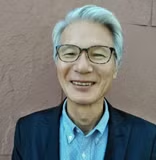
Hiroyuki T.
4.97 / 5
(166 reviews)
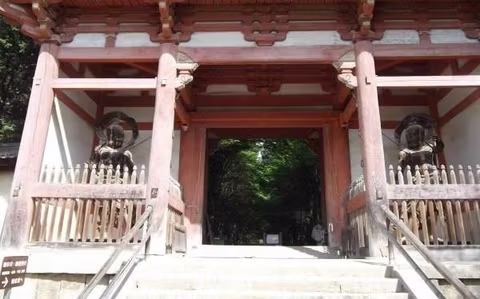
Tour of Daigo-ji Temple
Kyoto
4 hours
(Highlights) The origin of Daigo-ji Temple dates back to 874, when a student priest of Reverend "Kobo-daishi" acquired the mountain "Daigo-yama," which was then the sacred training ground for mountain-based ascetic priests, carved two Kannon Goddesses and placed the carvings on the top of the mountain. Afterward, under the protection of the three successive emperors, buildings were constructed one after another both in the upper and lower parts of the mountain. The temple served as the hub of the" Shingonsyu" Sect of Buddhism with the support of the Imperial family and feudal lords. Although it was destroyed by fires many times, the temple buildings were reconstructed after a ruler of Japan, Toyotomi Hideyoshi, held a cherry blossoms viewing party in 1598. In the Edo period, one of the temple buildings, "Sampoin hall," was designated as the head temple for those ascetic priests. Surviving the orders of "Separation of Shintoism and Buddhism" and "Abolition of mountain asceticism" after the Meiji Restoration, the temple has kept its teachings to this day under the efforts of successive head priests. (How to enjoy) You will be amazed at the harmony of man-made wooden structures, large and small, and the beautiful natural surroundings. The murmur of the small, pure stream will be soothing to you ears. The whole of the temple precincts will sevve you as the place for curing all your worldly worries and recharging your internal batteries. Sitting on the roadsides and enjoy having lunch may be a wonderful idea. (Others) Entrance fee is 600 yen for one segment of the temple compounds. Bus fare is 230 yen per one way from JR Yamashina station.
FROM$107/ per group

Tatsuhiro N.
4.56 / 5
(62 reviews)
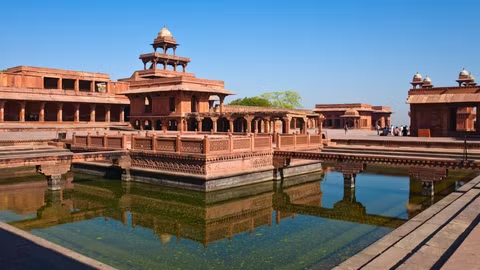
Overnight Agra Tour From Delhi 1 Night 2 Days
Delhi
2 days
An overnight Agra tour typically refers to a short trip from Delhi to Agra, where travelers spend a night in Agra to explore its famous attractions, primarily the Taj Mahal and other historical sites. An overnight Agra tour usually lasts for 1 night and 2 days. This allows travelers to have sufficient time to visit the main attractions in Agra without rushing through the experience.
FROM$200/ per group

Abhishek S.
5.00 / 5
(2 reviews)
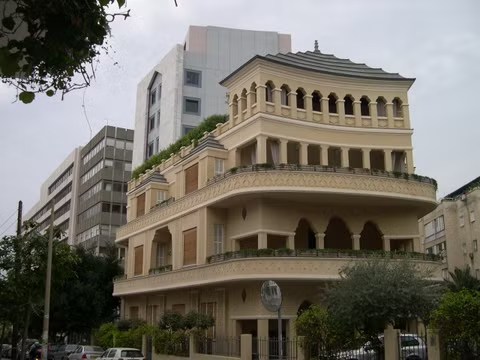
Solo-Traveler History of Tel Aviv walking tour
Tel Aviv
4 hours
We will take a stroll through the history of Tel Aviv mixed in with modern sky scrappers. We will see sites from the first neighborhood, the founding of the city, the beginning of the state of Israel and more. This is a walking tour, so please bring water, hats and sunscreen.
FROM$120/ per person

Melissa P.
4.00 / 5
(1 reviews)

Hiking between two power spots, Kurama Temple and Kifune Shrine, and more
Kyoto
7 hours
There are a lot of Buddhism temples and Shinto Shrines in Kyoto. This tour focuses on the Buddhism and Shinto power spots in North Kyoto. We will hike from a power spot Kurama Temple to another power spot Kifune Shrine for an hour. We also visit less-visited a Zen small temple with beautiful garden to feel the profundity of Kyoto. If you are interested in the places which are not listed here, just let me know, I will customize a tour for you.
FROM$337/ per group

Hiroyuki T.
4.97 / 5
(166 reviews)
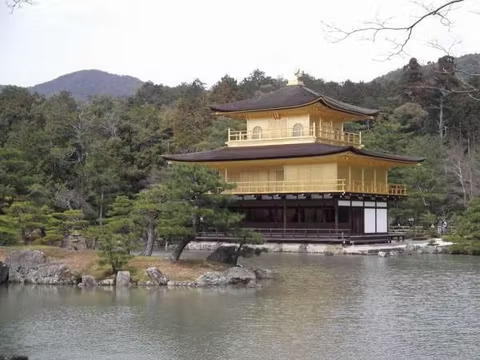
Tour of Kinkaku-ji Golden Pavilion
Kyoto
3 hours
(Highlights) Registered as the World Cultural Heritage Site in 1994, the temple, formally named "Rokuon-ji Temple", was originally built in 1397 by the third Shogun of the Muromachi period but was burnt down by a fire caused by a young Zen Buddhist student in 1950 and was rebuilt in 1955. The garden and buildings centered on the Golden Pavilion was said to represent the Pure Land of Buddha in this world. The temple also functioned as the official guest house. In 1987, gold foils were re-plated completely after one year and eight months of work. The golden structure forms a striking contrast to the water of the pond in front of it and the greenery surrounding the temple. As you walk on the path after viewing the temple, you will come across The "Sekka-tei (Place of Evening Beauty)" Tea House, where you can see the Golden Pavilion shining beautifully in the evening glow, and "Fudo-do" Temple hosing the stone statue of the Buddhist deity, "Fudo-myo-o." Yow will also find small stalls selling good-luck charms and small trinkets as well as souvenirs. (How to enjoy) Just walk on the pass leading to the Golden Pavilion and other buildings according to the instructions of a brochure you will be given after paying the admission at the gate. You can gaze at the magnificent golden structure and take its photos or ask someone for help to have your picture taken with the temple in the background. You can also enjoy drinking tea in the open-air garden near the "Sekka-tei" Tea House, or you can bask in the delicate aroma of burning incense at "Fudo-do" Temple. If you read the brochure, you can learn the history of the entire garden and the buildings. (Others) The bus fare is 230 yen and the admission fee is 600 yen.
FROM$107/ per group

Tatsuhiro N.
4.56 / 5
(62 reviews)
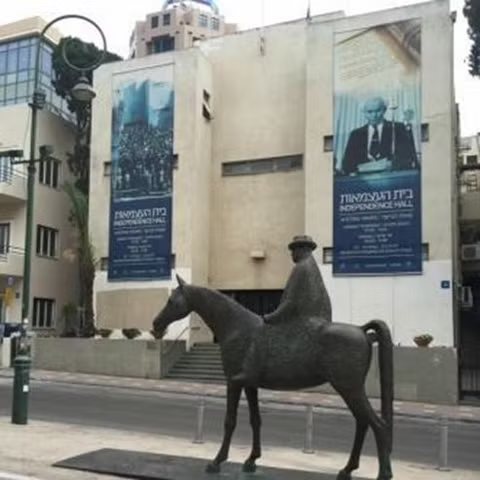
Historical tour including hostage square
Tel Aviv
4 hours
This tour is meant to be a meaningful experience based on the current situation, my personal experiences as well as Zionist history. This tour will cover some hard subjects.
FROM$160/ per group

Melissa P.
4.00 / 5
(1 reviews)

Tel Ashkelon National Park from Ashkelon
HaDarom
5 hours 30 min
We will explore the ancient city of Ashkelon. The national park includes a great picnic area and a private beach. There are many great sites to see from many different time periods. The most impressive finds are from the Canaanite period and the Roman period.
FROM$220/ per group

Melissa P.
4.00 / 5
(1 reviews)
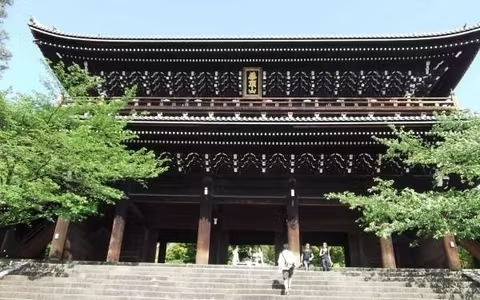
Tour of Chionin Temple
Kyoto
3 hours
(Highlights) Chionin Temple is the head temple of "Jodo (Pure Land) shinsyu" sect of Buddhism in Japan. In addition to the magnificent buildings in the precincts, it is famous for the two main features: one is "uguisu-bari" flooring technique which helped thwart the attempts by robbers to steal by emitting a sound somewhat resembling the note of a "uguisu" bush warbler as they walked and the other is the largest bell in Japan measuring 2.4 meters in diameter, 5.1 meters in height, 23.8 centimeters in thickness and weighing 74 tons. The temple buildings stand in the midst of trees on the height that can overlook the cityscape of Kyoto below. But before reaching the main hall, "Goeido", you have to go up the steep stone stairways which, in turn, enables you to take a good exercise. (How to enjoy) Just walk in the temple compound, get into the main hall and listen to the priests preach. Just see the marvelous technique utilized in the construction of the floor of corridors which is said to be the work of a noted sculptor of the late 16th century, Hidadi (left-handed) Jingoro, and see for yourself if the planking sounds like the chirping of a bush warbler as you walk. Just have a look at and wonder at the huge temple bell. (Others) The bus fare is 230 yen and the entrance fee is 800 yen. However, the main hall, "Goeido", is now under the extensive repair work which is estimated to take some four years (as of April, 2015).
FROM$107/ per group

Tatsuhiro N.
4.56 / 5
(62 reviews)
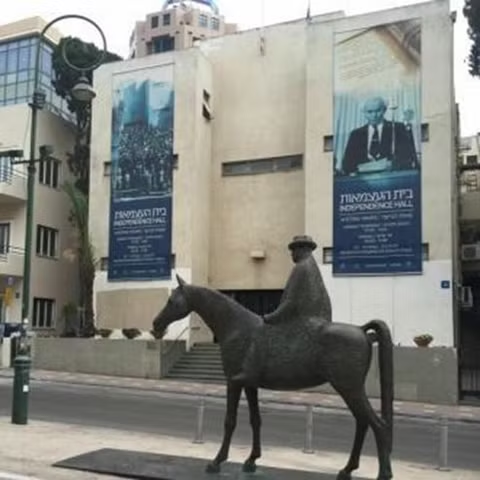
Tel Aviv photo scavenger hunt
Tel Aviv
4 hours 30 min
We will explore the winding streets of southern Tel Aviv to see interesting architecture, unique street art, professional exhibits and more. This is a walking tour. If you book on a Friday or a Tuesday during the day the tour will include a local artist fair. Everyone will have a list of things to find on the tour and take photos of, who ever finds the most will get a prize.
FROM$180/ per group

Melissa P.
4.00 / 5
(1 reviews)
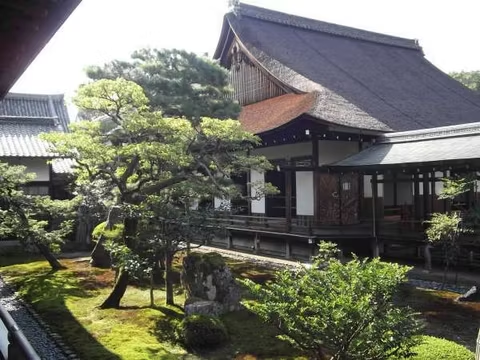
Tour of Daikaku-ji Temple
Kyoto
3 hours
(History of the temple) This temple is the "Sohonzan" head temple of the Daikakuji faction of Shingonsyu Buddhism sect founded by the Reverend Kobo-daishi Kukai. It was originally built as the villa of Emperor Saga when he got married in early Heian period (794 to 1191) and was later enlarged and given the name Daikaku-ji Temple in 876. It is also the place where "Ikebana" flower arrangement began and the location of Samurai dramas and other modern dramas. (Highlights) There are a total of eight buildings, a ceiling painting, a large pond and others in the spacious precincts which are built with all sorts of Japanese construction technique and are a pleasure to your eyes. (How to enjoy) Just walk inside the buildings according to the instructions. You can get in touch with the serene but refined environment and the traditional Japanese culture. (Others) The entrance fee is 500 yen and the JR fare is 240 yen from Kyoto station.
FROM$107/ per group

Tatsuhiro N.
4.56 / 5
(62 reviews)
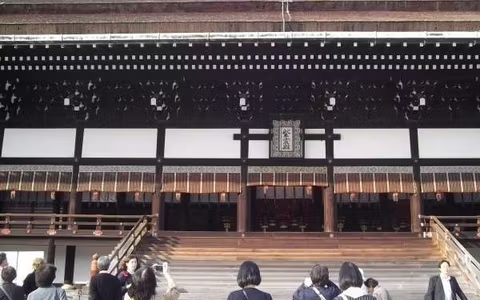
Tour of Kyoto-Gosyo Imperial Palace
Kyoto
2 hours 30 min
(Highlights) Kyoto-Gosyo Imperial Palace has been the residence of Japan`s successive emperors ever since her capital was moved to Kyoto more than 1,200 years ago. It is surrounded by a huge rectangular earthen fence 450 meters north to south by 250 meters east to west and the area is 110,000 square meters. In the compound, there are many magnificent structures that will make you sigh, all of which stand in perfect harmony toward each other and are the combination of all the traditional forms of Japanese architectural technique. The present palace, however, is the reconstruction of the original structures that was carried out toward the end of the Edo period (1603-1867). (How to enjoy) A guide will take you on a tour around the palace buildings. Have a look at them and you will marvel at the traditional Japanese construction technique. You can also enjoy seeing the trees, a pond, gardens and other natural surroundings in the palace grounds. (Others) Reservation is necessary before you visit the place except during the brief period of spring and autumun. It can be done through a return card, online or in person. If you visit the palace administration office by yourself, you can get the permission for the entry on the next day, but if you make a request for a visit online, you have to wait at least four days, and in case of a return card, a month. The subway fare from JR Kyoto station is 260 yen way.
FROM$107/ per group

Tatsuhiro N.
4.56 / 5
(62 reviews)

Mt. Koya and Women's Pilgrimage Route
Mount Koya
6 hours 30 min
Buddhism sacred mountain Mt. Koya was forbidden to women until the 19th century. Women were not allowed to enter the sacred place. Even so, women headed for Mt. Koya, walked the pilgrimage route, and finally walked the Women's Pilgrimage Routes to come closer. On this tour, we will walk a part the Women’s Pilgrimage Routes that still remain there, followed by visits to the Danjo Garan Temple Complex, Honzan Headquarters and the Inner Sanctuary Okunoin.
FROM$316/ per group

Hiroyuki T.
4.97 / 5
(166 reviews)

Tour of Nishi-Honganji Temple
Kyoto
2 hours
(History of the Temple) Designated as the UNESCO World Cultural Heritage Site in 1994, Nishi-Honganji Temple is the mother temple and headquarters of the Honganji faction of Jodo (Pure Land) Shinsyu sect of Buddhism. The Jodo-Shinsyu teaching was established by the Reverend Shinran-shonin (1173-1263) in the Kamakura period. He underwent austere trainings and hardships in various parts of the country before returning to Kyoto to complete his work, "kyogyoshinsho", or The True teaching, Practice and Realization of the Pure Land Way on Buddhism. After his demise, his daughter erected a mausoleum at Higashiyama, Kyoto, which became the foundation of Nishi-Honganji Temple today. In the 16th century, it was moved to and re-established at the present location. (Teachings of the sect) Followers of this sect will be reborn in the Pure Land and attain Enlightenment. They will be able to live lives to the fullest, become aware of both potentials and limitations in this world, overcome difficulties and realize happiness within their lifetime. ( What you can see in the temple) There are many structures in the precincts, many of which have the status of National Treasures and Important Cultural Properties of Japan. They are:" Amidado" (Hall of "Amida" Buddha, built in 1760), ""Goeido" (Founder`s Hall, completed in 1636), "Karamon" Gate, Shoin Hall, "Hiunkaku" House (believed to be part of Jurakudai Palace built by a ruler of Japan, Toyotomi Hideyoshi) and others. There is also a 400-year-old huge ginkgo tree called the "upside-down ginkgo tree", because it looks as if its roots were spread into the sky. ( How to enjoy) Walk around the entire compound of the temple, have a look at all of the magnificent structures and trees and imagine the power of Buddhism. You will learn the meaning of life. All that you see will deeply impress you and remain in your memory. You can pray for the peace of mind before the image of the Reverend Shinran-shonin in the Buddhist altar inside the halls sitting straight on your legs, or relax sitting on the wooden-floored corridors. (Others) There is no entrance fee, but you are supposed to offer whatever amount of monetary donations to the temple to express your appreciation. The bus fare is 230 yen.
FROM$72/ per group

Tatsuhiro N.
4.56 / 5
(62 reviews)

Tour of Adashino-nenbutsu-ji Temple
Kyoto
4 hours
(History of the temple) According to what has been told by temple priests, the Reverend Kobo-daishi established a temple in this area and buried the remains of the deceased scattered around some 1,200 years ago. Afterwards, the temple was made the training hall for the Reverend Honen and now it belongs to the Jodo (Pure Land) - Shinsyu sect of Buddhism. In the middle of the Meiji period (1868 to 1911), the monuments of the dead, which had remained unattended for many hundred years, were collected and re-arranged by local volunteers in accordance with the Buddhist doctrine. (Highlights) Located in the edge of a local community and at the foot of a hill, this temple consisting of six structures and a large graveyard, looks like a mountain retreat. Serene, quiet atmosphere prevails and visitors voluntarily bow to the stone monuments to pay respect to the souls of those who passed away a long time ago. There are more than 8,000 stone monuments in the precincts which are the gravestones of those who were deserted in this area in olden times and there is the wooden statue of Amida-Nyorai Buddha sitting in silence in the "Hondo" main hall. At the time of "Sento-kuyo" Buddhist ritual on August 23rd and 24th each year, the entite temple compound is literally lit by a thousand candles and the scene created by the light, darkness and stone structures makes us feel as if the Pure Land had suddenly appeared before us. In the meantime, variou kinds of colorful lanterns are displayed in the nearby streets and vacant lots and a concert is held by a band of a local high school. The palce attracts a huge crowd of people both from around Kyoto and from abroard on these days. (How to enyoy) Just walk around the temple precincts and feel the solemn atmosphere. The place is especially recommendable on the days of "Sento-kuyo" ritual, when you can have a good time being in the "blazing sea" of candlelights and also seeing the variou shapes of lanterns. You can get in touch with the long-lived local tradition which has a different taste from the conventionalized summer pleasures represented by fireworks shows and noisy festivals. (Others) The entrance fee is 500 yen (but 1,000 yen on the days of "Sento-kuyo" ritual). The bus fare is 230 yen. (If you take a JR train, the fare is 240 yen.)
FROM$143/ per group

Tatsuhiro N.
4.56 / 5
(62 reviews)

Tour of Heianjingu Shrine
Kyoto
3 hours
(Highlights) Heian Jingu Shrine has been and still is the face of Kyoto since 794. The magnificent shrine came into being when the restoration of Chodo-in, the main edifice of the capital city, Heian Capital Kyoto, was completed in 1895, exactly 1,100 years after the city was established by the 50th emperor of Japan, the Emperor Kammu. Citizens of Kyoto organized a body to deify the Emperor Komei, the 121st emperor, who turned out to be the last ruler of the capital, to honor his character as well as his great achievements who laid the foundation of modern Japan. As a result, the shrine was rebuilt in 1940 (the 2,600th year after the legendary Emperor Jimmu descended from the heaven) and has maintained the present grandeur since then. (How to enjoy) First, see the huge vermilion Torii-gate which is the entrance to the shrine marking off the sacred area. Next, have a look at the Daigokuden hall, which is the main worshipping hall and the place where the Shinto God is enshrined. Then, go into the "Shinen" sacred garden, where you will be met by various kinds of trees, plants, flowers, ponds, stepping stones, small bridges and stones for resting. There is also "Taiheikaku" ceremonial hall built above the largest pond. (Others) The admission fee of 500 yen will be charged if you wish to visit the "Shinen" sacred gardens. The bus fare is 230 yen.
FROM$107/ per group

Tatsuhiro N.
4.56 / 5
(62 reviews)

Tour of Sanjyusangen-do Temple
Kyoto
2 hours 30 min
(Highlights) The 120-meter-long temple houses a total of 1,000 standing statues of "Kannon" (Goddess of mercy), her gigantic statue seated in the center of those images, two powerful and dynamic statues of "Fujin" Wind God and "Raijin" Thunder God at either side of the hall and 28 images of guardian deities protecting the "Kannon" deities and pious Buddhists who believe in her. The statues are made of Japanese cypress using the special technique . As there are thirty-three 2.5-meter-long spaces between the columns in the facade, the temple came to be called "Sanjyusangen-do" (a hall with 33 spaces between columns). (History) Officially called "Rengeo-in temple and designated as the National Treasure, it was originally established by the powerful warrior-politician Taira-no-Kiyomori in 1164. After the original temple building was burnt down 80 years later, the building was reconstructed in 1266 and it has remained unchanged to this day for some 700 years with four major renovations in that period. Among the 1,000 standing statues, 124 were made in the 12th century, when the temple was founded and the remaining 876, in the 13th century, when the temple was renovated. (How to enjoy) Walk on the corridor in the long hall seeing the statues, while smelling the delicate aroma of burning incense, and you will be amazed at the serene-looking faces of the images of "Kannon-sama". Just bring yourself to the mysterious and esoteric world of Buddhism. You will never end up not admiring the ancient sculpture-making technology and the enthusiasm of those who were engaged in the construction of the statues. I wish I could add the pictures of these magnificent images, but I can`t, since photo-taking is no allowed inside the hall. They tend to be ignored, but you cannot miss the two structures in the temple precincts: South Gate and roofed earthen fence both of which are connected with Regent Toyotomi Hideyoshi and reflect the aesthetics of the 16th century. (Others) The bus fare is 230 yen and the entrance fee is 600 yen.
FROM$72/ per group

Tatsuhiro N.
4.56 / 5
(62 reviews)
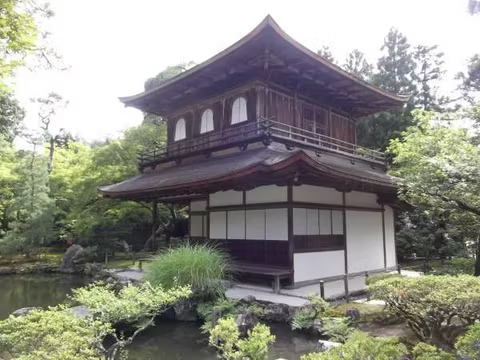
Tour of Ginkaku-ji Temple
Kyoto
3 hours 30 min
(Highlights) Originally built in 1482 by the eighth Shogun of the Muromachi Shogunate government, Ashikaga Yoshimasa, who spent his retirement days here, the temple is a Zen Buddhist temple belonging to the Shokokuji faction of Rinzaisyu sect of Buddhism, and is formally called Higashiyama- Jisyoji, named after his posthumous title. It is the place where Higashiyama Culture started after Kyoto was burnt down by an 11-year-long war between the two rival clans. The temple consists of 10 buildings, a garden, a pond, two wells and a lookout station, all of which forming a perfect combination of splendid man-made structures and the beautiful nature. (How to enjoy) After getting off the bus, go back a little bit and walk on the uphill road leading to the "Somon" gate, go through it and walk on the "Sando" approach of sand, on both side of which are hedges made of stones and bamboo and camellia trees, toward "Nakamon" middle gate, the main entrance to the magnificent courtyard. Once inside the temple precincts, walk on the paths in accordance with the directions. You will see all sorts components making up the beauty of Japanese gardens and structures standing among them. The main building, Ginkaku-ji Temple itself is, needless to say, will be your main focus of attention. The place attracts visitors all the year round, but the snow-capped temple building in winter, in particular, will be a joy to your eyes. (Transportation and entrance fee) The temple is some 45-minute bus ride from JR Kyoto station for a fee of 230 yen and the entrance fee is 500 yen. (Other pleasures) After you get out of the temple compound, walk along the "Tetsugaku-no-michi" (Path of Philosophy) for about 30 minute and you will get to Nanzen-ji Temple, famous for its splendid gate.
FROM$107/ per group

Tatsuhiro N.
4.56 / 5
(62 reviews)